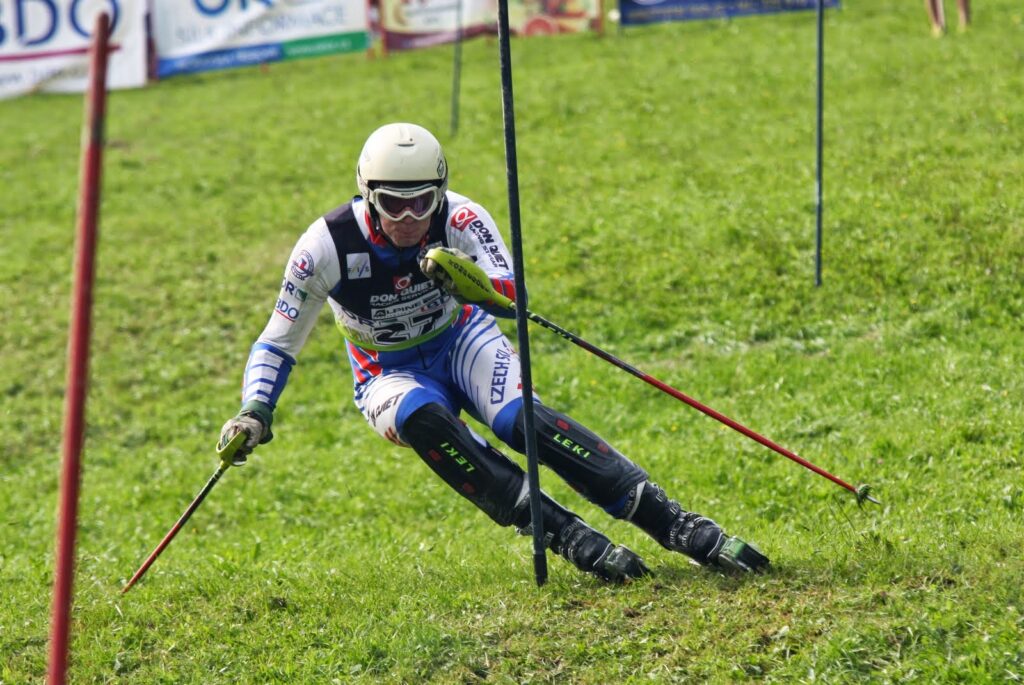
The 2022/3 season has finished for all but a handful of ski areas on shrinking glaciers. it’s always a bittersweet time of the year. Spring skiing is full of icy early morning runs, sunny lunches on mountain restaurant terraces, heavy evening resort runs and al fresco après ski. And the knowledge it will be six or more months before most of us visit the slopes again.
I feel it in my aging, aching bones each season. Every year I become less adventurous, pause longer between runs and – whilst I always start early in the day – finish earlier.
This season may have been atypical in many ways. Firstly it was the first proper season post the pandemic (although in many regards it is still with us). However we also saw some prolonger periods of warm weather and little precipitation. Global warming or just a bad season? Who knows. But global warming is a feature, and it impacts winter sports more than any other sport.
Most symptomatic of changing weather patterns is the shrinkage of glaciers. The melting of the world’s glaciers has nearly doubled in speed over the past 20 years, according to an article in Nature published a couple of years ago. In many resorts the rapid shrinkage of glaciers is all to obvious to the regular skier.
Alongside this the snow line is retreating, not consistently every year, but trending that way, It is forcing some alpine plants to retreat further up mountains because of the advance of invasive valley plants, to a point where one day there will be nowhere further for them to retreat.
For skiers the shorter winter sports seasons have made some resorts less viable, has made ski holiday planning less predictable and has led to greater environmental damage through the increased use of snow cannon.
That is not to say resorts are not trying to improve their environmental footprint, some very successfully. But the ski industry is not a poster child for environmentalism.
Many younger people are starting to see skiing as a bad environmental choice. The Ski Club of Great Britain has an aging membership, in part symptomatic of the fact that younger generations are not as attracted to ski holidays as much as baby boomers were.
Additionally, skiers who invest a lot of money and vacation time in their passion may be increasingly frustrated by unpredictable conditions and choose other holiday options, or perhaps ski less frequently.
It will also be tough for parents whose ski holidays are determined by the school holidays of Christmas, half-term and Easter. The former and latter will see increasingly unreliable ski conditions.
As a result, I envisage a decline in the uptake of skiing from countries that do not have easy access to mountains. For the British, Brexit exacerbates this.
This will not deter skiers who live within easy reach of the slopes. They can choose which days they ski and – if the prospects are not good – they can choose to do something else.
With the increased uptake of home-working, will there be people who make a choice of living near to the slopes to work, because they can? Will people who live in countries without easy access to ski resorts consider moving to the mountains as a quality of life choice?
This demographic may not be huge, but it will be impactful. Already it can be seen in property prices in and near ski resorts. Additionally it will increase the demand for amenities such as schools, as people may decide to bring up families in the mountains.
I already see an increased uptake of high altitude skiing, of ski touring and ski mountaineering. It has a low ecological footprint and the season often embraces periods of the year where resort skiing is not viable. it has a much lower commercial and environmental impact than lift-based skiing.
The occasional skiers will still come from Milan and Munich, from Lausanne and Lyon. I don’t see this segment declining in importance but it may be increasingly responsible for large swings in demand on higher resorts. As they did in the pandemic, some ski resorts may require people to book ahead at busy periods in order to manage capacity. Hotels will offer big discounts for mid-week, off-peak rooms, and even bigger premiums for peak season in premium locations.
Lower mountain resorts may decide to entirely re-invent themselves as primarily summer destinations. Many already have more tourists in the summer than in the winter. Traditionally a lot of these resorts have closed for the Spring and Autumn, but perhaps they will in future see these periods as an opportunity to promote holidays that are often at least as attractive at these time of the year as in the summer – walking, cycling, spas and gastronomic for example.
